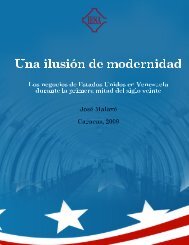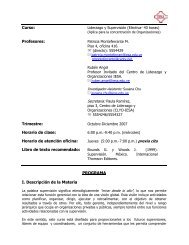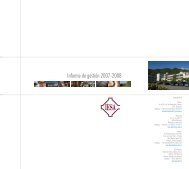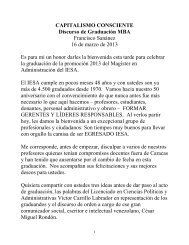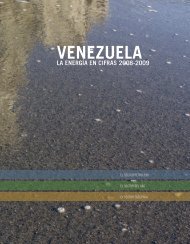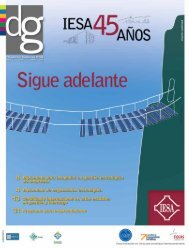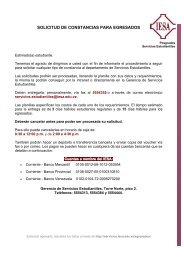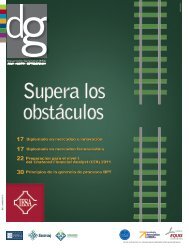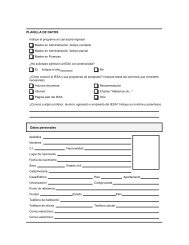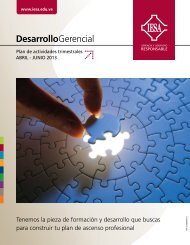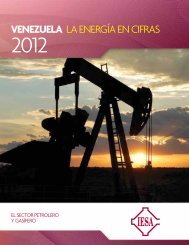VENEZUELA ENERGY IN FIGURES - Servicios IESA
VENEZUELA ENERGY IN FIGURES - Servicios IESA
VENEZUELA ENERGY IN FIGURES - Servicios IESA
- No tags were found...
Create successful ePaper yourself
Turn your PDF publications into a flip-book with our unique Google optimized e-Paper software.
Tax over own consumption (HOL, Article 48)<br />
Is equivalent to a rate of 10 percent for each cubic meter of hydrocarbons derivatives produced and<br />
consumed as fuel for operational activities. The consumer price of the product should be used for<br />
purposes of quantifying the amount owed.<br />
General Consumption Tax (HOL, Article 48)<br />
This tax applies to each liter of hydrocarbons derivative product sold in the domestic market, ranging from<br />
30 to 50 percent of the price. The effective rate is set in the annual Budget Law.<br />
Extraction Tax (HOL, Article 48)<br />
Payment equivalent to a third of the value of liquid hydrocarbons extracted at the operative area. It should<br />
be measured according to article 47 of the HOL.<br />
The payment should be made monthly by the operating firm, and if applicable, made at the same moment<br />
the royalty is paid under the special advantage condition. By “special advantage condition” the law means<br />
the right that the tax payer holds to deduct the amount of royalty from the Extraction Tax total.<br />
The tax payer holds the right to deduct any special advantage that might be paid annually from the<br />
Extraction Tax total, but only on periods subsequent to the payment of that yearly special advantage.<br />
In practice, this tax amounts to an additional royalty of 3.33 percent that PDVSA and Orinoco´s Belt projects<br />
should pay. This tax might not apply if the sum of royalty plus taxes and one percentage point of utilities<br />
destined to investments were larger than the total value of extracted hydrocarbons that year.<br />
Export Registry Tax (HOL, article 48)<br />
This tax applies to 0.1 percent of the exported hydrocarbons value.<br />
For this matter, the exporter should report to the Ministry of Popular Power for Oil and Mining the volume,<br />
API grade and sulfur content of the shipment.<br />
Special Tax Over Extraordinary Or Exorbitant Oil<br />
Conditional tax applied over the gap between international oil market prices and prices estimated by the<br />
Annual Budget Law.<br />
Market Prices<br />
At the $80 to $100 range, a tax rate of 80 percent will be applied to the difference between $80<br />
and the observed price.<br />
At the $100 to $110 range, a tax rate of 90 percent will be applied to the difference between $100<br />
and the observed price, in addition to the contributions described before.<br />
Prices over $110, a tax rate of 95 percent will be applied to the difference between $110 and the observed<br />
price, in addition to the contributions described before.<br />
A tax rate of 20 percent will be applied to the difference between the oil price established in the Annual<br />
Budget Law and $80.<br />
Royalties, extraction or registry taxes apply up to $80.<br />
Taxes collected this way are to be deposited in the National Development Fund (FONDEN).<br />
10



